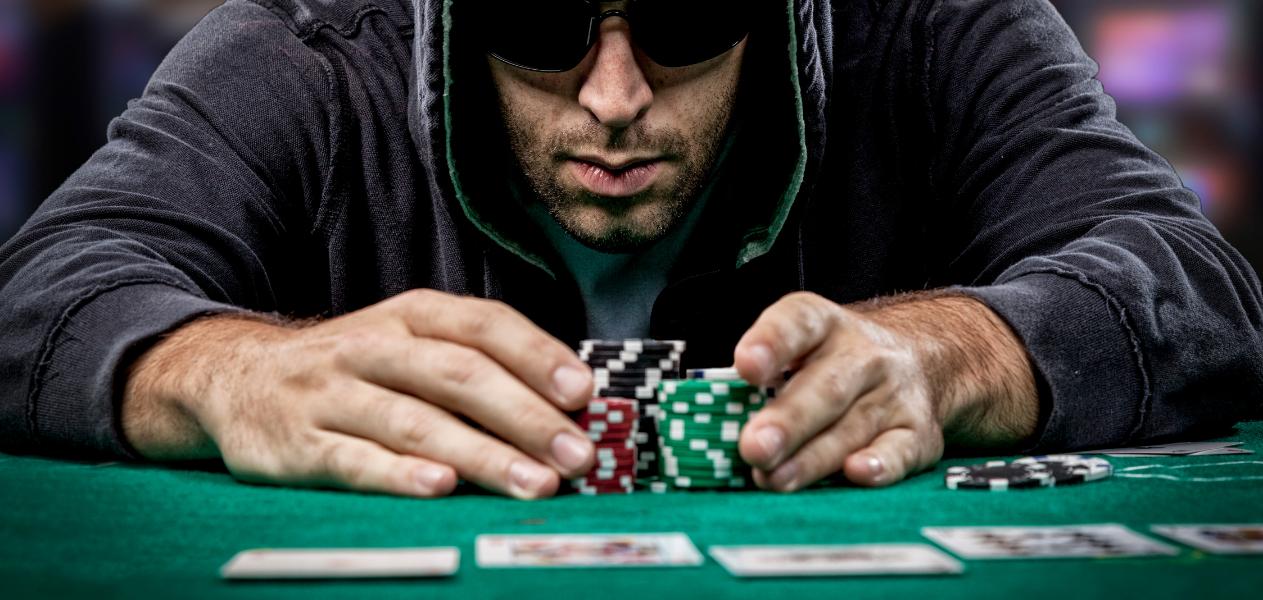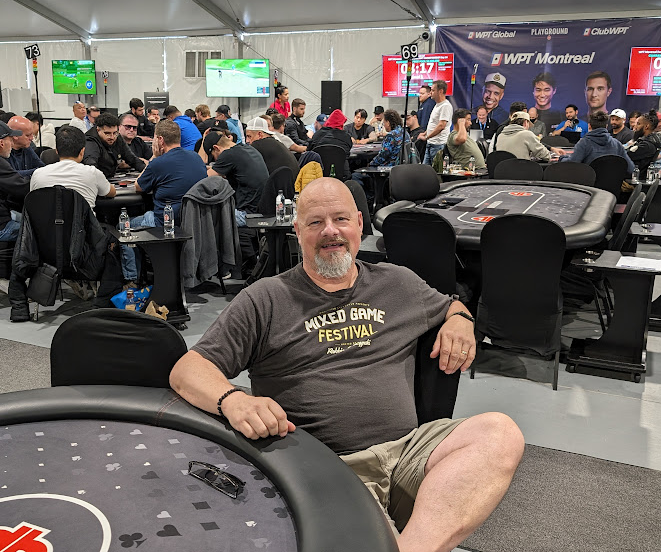In my prior article, Cbet Bluff On Single Big Card, Dry Flops, I discussed how to successfully bluff those types of flops.
However, you’re not the only one who knows this. Many of your opponents bluff these flops as well, because they recognize easy bluffing opportunities.
Critical Thinking: How can you exploit players who bluff on these flops like you do?
Be your own coach for a moment and answer that question before you read on for my answers.

Re-Bluffing the Flop Cbet Bluffers
Example Hand: In the BB versus a BTN open-raiser
You’re in the BB. It’s folded to the loose-aggressive BTN who opens to 3bb. The SB folds and you call.
The pot is 6.5bb and the flop comes K83r. You completely missed the flop (think hands like 76, QT or 22).
You check and the BTN cbets 3.5bb, slightly over ½ pot.
Folding is absolutely fine here (with a nothing hand), but you know your opponent frequently bluffs the flop. With his wide BTN open-raising range and such a hard-to-hit board, you recognize a good spot to steal from this bluffer.
How can you do that?
1. Call Now to Bluff Later After They Check
If you know the BTN bluffs the flop a lot but doesn’t often barrel the turn, this is a worthy strategy. You’re relying on his tendency towards turn honesty, so get to the turn and keep the pot small by just calling. As soon as he checks you pounce with a bluff bet.
Be sure to use a size that says, “I’ve got a TP+ hand, and I’m looking for value.” After calling the flop, the turn pot is 13.5bb. A small 3-4bb bet isn’t likely to work. Instead, go 7-8 bb’s to send the right message and earn the pot.
Also, this is more successful when you have a positional advantage. This means you can bet the turn after they check. If you’re OOP, you can bet the river after they check-back the turn.
Tip – Time down a few extra seconds before checking and a few more seconds before calling. This gives the impression you have a decision to make, and you might be considering a check-raise with TP or a set. It’s going to help to sell your bluff later.
2. Bluff Raise Their Flop Cbet 2.5x or Larger
Like the last re-bluffing strategy, this is easier to do when IP with that built in positional pressure they’ll feel. However, doing it from OOP *screams* strength, so it earns plenty of folds.
Choose a bluff raise size that puts pressure on them and makes calling with a sub-par hand difficult. “What would I raise with a set?” is a great question to help you gauge the right size. In the example above, they cbet 3.5bb, so 2.5x = 8.75bb. That will often work. However, the pot after their cbet is already 10bb. They just have to call 5.25bb more to win a total pot of 15.25bb. You might have to make it 3x to 10.5bb to earn the pot.
Your raise is repping a strong TP hand, 2p or a flopped set, like KQ/KJ, K8s/K3s or 88/33 on the K83 flop. If you actually held one of these hands, you’d be likely to barrel for value. So, if they call and you see a turn, barrel bluff most of the time if you believe they could call your flop raise with a marginal hand. “Would I barrel for value with 33 or KQ? Of course I would.” Continue sending the message that they must exit the hand due to your overwhelming strength.
However, if they call the turn barrel, they’re telling you they’ve got the goods. So, it’s probably best you give up on the river. They’re the one holding TP+, so it’ll require all your chips to earn the pot. And even then, on a dry board, they might not find a fold.
3. Call Now with a Plan to Raise the Turn NO MATTER WHAT
Use this play against loose players who often barrel turns. You want to see high flop and turn cbets in their HUD, like 80% flop to 75% turn, or 77% to 65% respectively. If they can barrel bluff, successful turn bluff raises earn more chips. For example:
- Flop pot = 6.5bb. They cbet 3.5bb and fold to your raise. You’ve earned 6.5bb from them.
- However, if you call the flop cbet, the turn pot = 13.5bb.
- Now they barrel 8bb and fold versus your 24bb raise. You’ve earned 14.5bb from them.
You must make the decision to use this strategy before calling on the flop because you know his tendency is to barrel bluff. When he barrels the next street, no matter what the card is, you strike with a 2.5x to 3x raise. You planned this ahead of time, he did what you expected, now spring the trap and earn the pot.
Take Action
Study This Situation
Review 20 hands in your database where you had the opportunity to bluff raise a cbet.
Visualize your opponent’s preflop range (even better, build the range in Flopzilla Pro) to gauge how much of his cbetting range is bluffing. Would a bluff raise on the flop have earned the pot (strategy #2)? Or, would calling now to bluff later (#1) or planning a turn bluff raise (#3) have been more likely to win the pot?
Analyzing these 20 hands will prepare you to make more of these re-bluffs in-game.
Play With Purpose
It’s time to practice these strategies. Play just one or two tables and look for every opportunity to re-bluff the bluffers, and pull the trigger every time you believe they can find a fold.
If you’re not involved in the hand, but they see a flop of K83 or A92, etc., would you bluff the cbettor if you were involved?
The more you practice making the play or noodling on it when you’re not involved, the better you’re going to get, and the more pots you’re going to earn.






